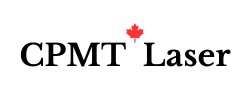
Intense Pulsed Light Hair Removal is a popular option for those seeking hair removal solutions. However, IPL systems have notable disadvantages when compared to more specialized technologies like Alexandrite and Nd: Yag lasers. Despite being marketed for their flexibility and cost-effectiveness, IPL devices often fall short in terms of effectiveness, safety, and treatment precision. Let’s delve into why Intense Pulsed Light Hair Removal might not be the best choice.
1. Less Targeted Technology
One significant drawback of Intense Pulsed Light Hair Removal is the use of a broad spectrum of light wavelengths, which makes it less effective and precise compared to laser systems.
- Broad Spectrum Limitations: IPL technology emits multiple wavelengths, typically between 500 and 1200 nm, dispersing energy widely across the skin. Unlike the focused wavelengths used in Alexandrite (755 nm) and Nd: Yag (1064 nm) lasers, IPL’s scattered light cannot exclusively target hair follicles.
- Reduced Precision: This lack of focus means Intense Pulsed Light Hair Removal is less effective at destroying hair follicles, often resulting in incomplete hair removal and a higher risk of skin irritation, especially for darker skin tones. Alexandrite and Nd: Yag lasers, on the other hand, are highly efficient because they are tailored to target melanin more specifically.
2. Lower Effectiveness on Darker Skin and Lighter Hair
Intense Pulsed Light Hair Removal has limitations when dealing with a variety of skin tones and hair colors, reducing its overall efficacy.
- Darker Skin Challenges: For individuals with darker skin, IPL treatments pose a higher risk of side effects, such as burns or hyperpigmentation, due to the non-selective nature of the broad-spectrum light. In contrast, Nd: Yag lasers are safer and more effective for darker skin tones, as they penetrate deeper and target hair follicles without affecting surrounding skin tissue.
- Ineffectiveness on Lighter Hair: IPL struggles with lighter hair colors like blonde, red, or gray because the light does not effectively absorb the minimal melanin present. Alexandrite lasers perform better on fair skin with dark hair, where the contrast allows for optimal absorption and destruction of hair follicles.
3. Higher Risk of Side Effects
The non-specific energy distribution of Intense Pulsed Light Hair Removal contributes to a greater likelihood of adverse side effects.
- Potential Skin Damage: The diffuse nature of IPL light increases the risk of burns, hyperpigmentation, blistering, and other skin irritations. In comparison, Alexandrite and Nd: Yag lasers offer greater safety. Their specific wavelengths minimize damage to surrounding tissues by focusing energy solely on hair follicles.
- Increased Sensitivity Issues: The higher risk profile of IPL can make treatments less appealing, especially for patients with sensitive or reactive skin.
4. More Treatments Required
Another drawback of Intense Pulsed Light Hair Removal is the number of sessions needed to achieve the desired results.
- Longer Treatment Plans: Due to its lower power and diffused energy, IPL often requires more sessions compared to Alexandrite and Nd: Yag laser systems. These lasers are more efficient, delivering faster and more consistent results.
- Cost Implications: Although IPL might seem more affordable at first, the need for additional treatments can drive up the overall cost. Alexandrite and Nd: Yag laser treatments, though more expensive per session, often prove more economical and time-saving in the long run.
5. Not Ideal for Thick or Coarse Hair
Intense Pulsed Light Hair Removal generally underperforms on thick or coarse hair, making it less effective for some patients.
- Challenges with Coarse Hair: The scattered light from IPL lacks the power to penetrate deeply into the skin and destroy thicker hair follicles. Alexandrite lasers are particularly effective at removing thick, dark hair on fair skin, and Nd: Yag lasers excel at treating coarse hair on darker skin tones thanks to their deep penetration and higher energy output.
6. Decreased Penetration Depth
Intense Pulsed Light Hair Removal does not penetrate as deeply into the skin as other laser systems, which limits its effectiveness for certain hair types.
- Shallow Penetration: IPL’s energy is not designed to reach deep-rooted hair follicles. This makes it less suitable for individuals with hair that grows deeper beneath the skin. Nd: Yag lasers, with their longer wavelength, are specifically built for deeper penetration, ensuring more effective treatment of thick and deeply rooted hair.
- Long-Term Efficacy Concerns: The decreased penetration of IPL means it may not offer long-term hair reduction as effectively as lasers, especially for patients with difficult-to-treat hair types.
Conclusion
While Intense Pulsed Light Hair Removal may be appealing due to its lower upfront cost and versatility, it has considerable limitations. Compared to Alexandrite and Nd: Yag lasers, IPL is less effective, requires more sessions, and poses a higher risk of side effects. Alexandrite and Nd: Yag laser systems provide better precision, greater safety, and more efficient results, particularly for those with darker skin or thicker hair. Ultimately, investing in specialized laser hair removal treatments is likely to yield more reliable, long-lasting outcomes.
